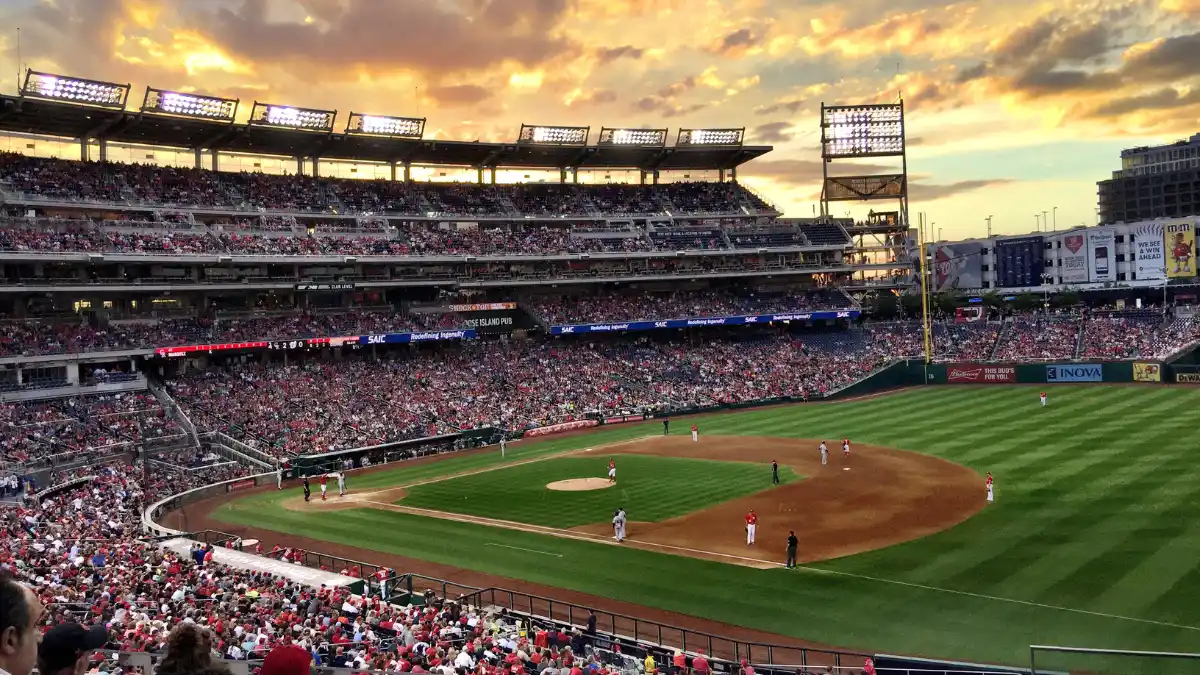Supreme Court Cases Shaping Juvenile Justice in India. The youth of a nation is its invaluable asset, representing the future and the promise of society. Governments are highly invested in nurturing and guiding young minds to ensure they become productive, responsible citizens. However, there are instances when some young individuals stray from the path, influenced or manipulated into committing crimes. Various factors, including social, familial, mental health, biological, and environmental elements, can contribute to this deviation.
Criminal conviction is a fundamental principle of the justice system, extending to individuals of all ages, including children and young offenders. Yet, a distinctive framework has been established for young offenders, referred to as juveniles, falling under the purview of the Juvenile Justice Act (Care and Protection of Children) 2015. Juveniles are treated differently from adult offenders, with the primary objective being their reform and rehabilitation rather than punitive measures.
Contents
- 1 Supreme Court Cases Shaping Juvenile Justice in India (Care and Protection of Children) Act, 2015,
- 2 Understanding the Juvenile Justice Act: Objectives and Key Legal Precedents
- 3 Pratap Singh v. State of Jharkhand (2005)
- 4 Hari Ram v. State of Rajasthan (2009)
- 5 Abuzar Hossain @ Gulam Hossain v. State of West Bengal (2012)
- 6 United Nations Standard Minimum Rules for the Administration of Juvenile Justice, 1985
- 7 The Beijing Rules acknowledge several fundamental rights of juveniles:
- 7.1 Jarnail Singh v. State of Haryana (2013):
- 7.2 Essa @ Anjum Abdul Razak Memon v. State of Maharashtra Through STF, CBI Mumbai (2013):
- 7.3 Jitendra Singh @ Babboo Singh v. State of U.P. (2013):
- 7.4 Salil Bali v. Union of India (2013):
- 7.5 Shabnam Hashmi v. Union of India (2014):
- 7.6 Dr. Subramanian Swamy v. Raju, Thr. Member Juvenile Justice Board (2014):
- 7.7 Parag Bhati (Juvenile) through legal guardian v. State of Uttar Pradesh (2016):
- 7.8 Sher Singh @ Sheru v. State of U.P. (2016):
- 7.9 Sampurna Behura v. Union of India (2018):
- 7.10 In Re Contagion of COVID-19 virus in Children’s Protection Homes (2020):
- 8
- 9 1.Effective Strategies for Boosting Your Leadership Skills
- 10 2.Sydney and Melbourne restrict new migrants
Supreme Court Cases Shaping Juvenile Justice in India (Care and Protection of Children) Act, 2015,
was enacted to amend and consolidate laws related to the various categories of children protected by the Act. It aligns with international conventions and constitutional provisions related to the care, protection, treatment, and development of children.
The Act recognizes two primary categories of children:
- Children in Conflict with the Law.
- Children in Need of Care and Protection.
The Need for the Act
In 1986, India adopted the United Nations Minimum Rules for the Administration of Juvenile Justice, 1985, by enacting the Juvenile Justice Act, 1986. The main focus of this legislation was the rehabilitation of juveniles in conflict with the law. However, as time progressed, it became evident that new legislation was necessary, leading to the enactment of the Juvenile Justice (Care and Protection of Children) Act, 2000.
The 2013 Nirbhaya Rape Case, a horrific incident that shook the nation, prompted the legislature to reevaluate the Act concerning the age of juveniles, their trial, and their treatment. Consequently, the Juvenile Justice (Care and Protection of Children) Act, 2015, was introduced and implemented. This current legislation mandates the establishment of a Juvenile Justice Board in every district, responsible for adjudicating cases involving juveniles and issuing necessary orders.
Understanding the Juvenile Justice Act: Objectives and Key Legal Precedents
The primary objective of the Act is to consolidate and amend the law related to juveniles and children who have been abused or harassed in any manner and need care and protection. It aims at rehabilitation and reintegration of juveniles back into society. Furthermore, it deals with the treatment and development of such children. The Act provides for different mechanisms that hear and dispose of cases related to children covered under its provisions, and it establishes various shelter homes where these children are kept for treatment, rehabilitation, and development.

Sheela Barse v. Union of India (1986)
In this case, a petition was filed, urging the court to release children under 16 years of age who were being held in jails across different states. The Supreme Court responded by issuing notices to the respective respondents and directing Judicial Magistrates to inspect jails, shelter homes, and observation homes within their districts. The major issue in this case was whether children under 16 years of age held in jails were subjected to mistreatment or abuse.
The Supreme Court observed that confining children to prisons like adult criminals would have harmful effects on their growth and development. As a result, several directions were given:
- All states were required to enforce the Children Act, 1960, and ensure its compliance.
- Prisons across the country were instructed to diligently maintain jail manuals.
- District and session judges were mandated to visit prisons in their respective districts at least once every two months.
- Visiting judges were to ensure that children were provided with the benefits of jail manuals.
Pratap Singh v. State of Jharkhand (2005)
In this case, the appellant was arrested for involvement in a crime where the victim died of poisoning. When the appellant was brought to court, he was 18 years old, but it was alleged that he was a juvenile at the time the crime was committed. The case was transferred to a juvenile court, where his age certificates were examined, and he was found to be a minor on the date the crime occurred, leading to his release on bail.
However, dissatisfaction with this decision led to an appeal to the Additional Session Judge. This court determined that the date of production in court, rather than the date of the crime, should be used to ascertain a person’s juvenility.

Hari Ram v. State of Rajasthan (2009)
This case involved an accused named Hari Ram, whose age was in question. The trial started with the Additional Sessions Judge determining that the accused was below 16 years old when the crime was committed under the 1986 Act. The case was referred to the Juvenile Justice Board. However, the High Court disagreed, stating that the accused was over 16 years old when the crime occurred.
The Supreme Court clarified that pending cases should be dealt with according to the 2000 Act after its enactment, making it applicable to this case, where the accused was considered a juvenile.
Abuzar Hossain @ Gulam Hossain v. State of West Bengal (2012)
In this case, an appeal was made regarding juvenility on the date the crime was committed. The Supreme Court ruled that claims of juvenility could be raised even after a case’s final disposal. The burden of proof for such claims falls on the person making the claim, and the court must not take a technical approach when addressing them. However, the court retains the authority to reject false claims. In this case, the issue of juvenility had not been considered at any stage in the trial court or High Court, and there was no evidence to support the claim.
United Nations Standard Minimum Rules for the Administration of Juvenile Justice, 1985
The United Nations Standard Minimum Rules for the Administration of Juvenile Justice, commonly known as the Beijing Rules, play a pivotal role in the treatment of juvenile offenders. These rules apply universally, without regard to nationality, caste, race, or religion. They emphasize that the trial procedures designed for adult criminals are unsuitable for juveniles. Instead, the focus should be on rehabilitation and reintegration.
The Beijing Rules acknowledge several fundamental rights of juveniles:
- Presumption of Innocence: Juveniles must be considered innocent concerning prosecution.
- Information and Counseling: Juveniles must be informed about the charges against them and have access to counseling.
- Right to Remain Silent: They have the right to remain silent during investigation or interrogation.
- Presence of Parents or Guardian: Their prosecution must occur in the presence of their parents or guardian.
- Right to Appeal: Juveniles have the right to appeal, a critical element of their legal protection.
Jarnail Singh v. State of Haryana (2013):
In the case of Jarnail Singh v. State of Haryana (2013), the accused faced charges related to the abduction of a minor and the subsequent commission of sexual assault. This landmark case saw the Supreme Court applying the rules governing juveniles under the Juvenile Justice (Care and Protection of Children) Rules, 2007, to instances falling under the Protection of Children from Sexual Offences Act, 2012. The case highlights the importance of age determination and protection of juveniles in sexual offense cases.
Essa @ Anjum Abdul Razak Memon v. State of Maharashtra Through STF, CBI Mumbai (2013):
In this case, the accused were convicted under the Terrorists and Disruptive Activities (Prevention) Act, 1987, concerning the 1993 Bombay blasts. The Supreme Court grappled with the question of whether the Juvenile Justice Act, 2000, would prevail over the TADA Act. The verdict clarified the hierarchy of these laws, emphasizing the applicability of the Juvenile Justice Act to cases involving children.
Jitendra Singh @ Babboo Singh v. State of U.P. (2013):
This case revolved around a dowry death, wherein one of the accused, during the Supreme Court appeal, claimed to have been a minor at the time of the offense. The Court upheld the conviction but also recognized the accused as a juvenile under the Juvenile Justice Act, 2000, emphasizing the need for rehabilitative mechanisms for juvenile offenders.
Salil Bali v. Union of India (2013):
The Salil Bali case involved a person charged with rape at the age of seventeen and a half. It prompted discussions on the need to reevaluate the Juvenile Justice Act, especially in cases involving serious offenses committed by individuals between 16 and 18 years. The Supreme Court addressed the release of juveniles after attaining majority and the age limit for juveniles.
Shabnam Hashmi v. Union of India (2014):
This case revolved around adoption under the Juvenile Justice Act, 2000. The Supreme Court recognized the right to adopt as a fundamental right, irrespective of religion, caste, or creed, providing a more inclusive approach to adoption.
Dr. Subramanian Swamy v. Raju, Thr. Member Juvenile Justice Board (2014):
Amid the Nirbhaya case, this legal battle raised questions about treating a minor offender as an adult. The Supreme Court upheld the importance of rehabilitating and restoring juvenile offenders, reinforcing the distinctions between juvenile and adult offenders.
Parag Bhati (Juvenile) through legal guardian v. State of Uttar Pradesh (2016):
This case challenged the determination of juvenility. The Supreme Court emphasized that the principle of juvenile under the Act applies primarily to cases where the accused is prima facie a minor. Offenses displaying the maturity of the accused may not warrant juvenile treatment.
Sher Singh @ Sheru v. State of U.P. (2016):
In this case, the appellant sought the status of a juvenile based on matriculation records. The court provided guidance on the types of documents to determine age and asserted the right of a person to raise the plea of juvenility in criminal appeals.
Sampurna Behura v. Union of India (2018):
Social activist Sampurna Behura filed a writ petition highlighting issues faced by children in various homes. The Supreme Court issued directions to ensure the welfare and protection of children, including establishing proper child care institutions and training for personnel.
In Re Contagion of COVID-19 virus in Children’s Protection Homes (2020):
During the COVID-19 pandemic, a writ petition addressed the safety of children in juvenile homes. The Supreme Court issued directions to safeguard their health and well-being.
Frequently Asked Questions:
1. Which Act replaced the Juvenile Justice Act, 2000?
- The Juvenile Justice Act (Care and Protection of Children), 2015, replaced the 2000 Act.
2. What is the purpose of the Juvenile Justice Act, 2015?
- The purpose of the Act is to consolidate the law related to children in conflict with the law and make amendments to provide them with care, protection, development, and treatment to rehabilitate and reintegrate them into society. It emphasizes the welfare of children, irrespective of their religion, caste, or creed.
3. Who is a ‘juvenile’ under the Juvenile Justice Act, 2015?
- According to Section 2(35) of the Act, a juvenile is defined as a child below 18 years of age.
4. What are the features of the Juvenile Justice Act, 2015?
- The Act is based on various principles, such as the presumption of a child’s innocence, the right to participate in proceedings, and the responsibility of families for the welfare of children. It also focuses on rehabilitation and reintegration, ensuring the protection of children’s rights.
5. What principles are recognized under the Act?
- Section 3 of the 2015 Act outlines fundamental principles, including the presumption of a child’s innocence, dignity, participation of the child in proceedings, the child’s best interest, the responsibility of families, non-discrimination, right to privacy and confidentiality, and more.
Conclusion:
The legal precedents discussed in this article demonstrate the evolving landscape of juvenile justice in India. Each case has played a pivotal role in shaping and refining the Juvenile Justice Act, reinforcing the need for a comprehensive approach to the welfare and rehabilitation of children in conflict with the law. As India continues to address challenges in the juvenile justice system, these cases serve as guiding lights, ensuring that the rights and interests of children remain at the forefront of legal proceedings.
Read More







